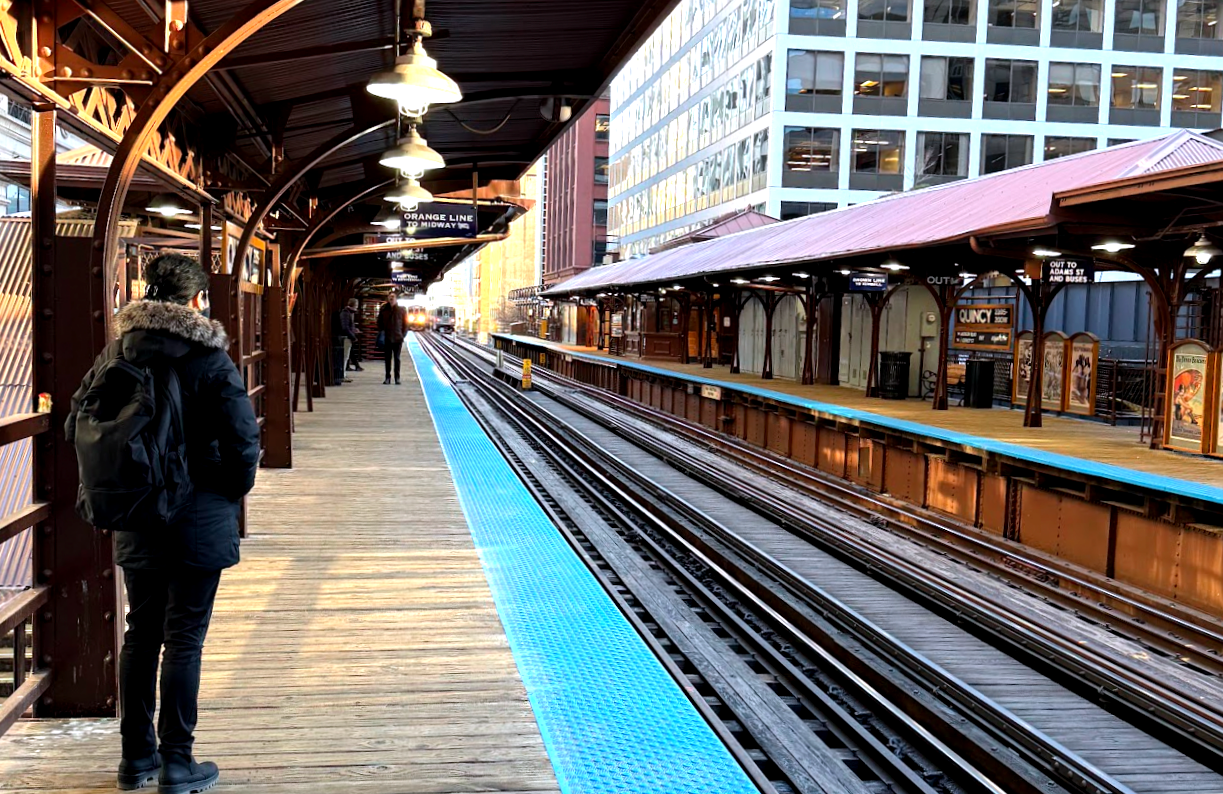The Design We Leave Behind
#027: Every design choice leaves a trace — in steel, in process, in memory.
Three months in Chicago, and I’m still coming to terms with the L.
On the surface, it’s iconic. The rattle of steel over the streets, the way the tracks wrap around the Loop like a crown. The map that looks almost like modern art. I admire it the way you might admire an old typewriter — clunky, but beautiful.
But admiration fades when you’re late for a meeting because your train idles between stations. Or when you’re dragging luggage up endless stairwells because an elevator doesn’t exist. Or when you’re trying to transfer lines and realize you need to exit the station, cross a busy street, and interpret signage that seems designed to test your patience rather than guide you. Or when you’re west and need to go north, but the only way to do so is to go south and east first.
The L isn’t just a transit system — it’s a time capsule of design decisions that made sense once, but less so now.
Systems Remember What We Forget
As designers, we like to believe we build for the future. But the truth is: design remembers the past.
The L remembers 1892, when it was rushed into existence to carry visitors to the 1893 World’s Columbian Exposition. It remembers the mid-20th century, when Chicago prioritized funneling commuters into the Loop over connecting neighborhoods to one another. It remembers the compromises, shortcuts, and exclusions of every decade since.
You feel those memories in your body when you navigate it today.
Design Debt, Writ Large
In digital design, we talk about design debt — the messy code, inconsistent patterns, or duct-taped workflows we hope to clean up later. Often, “later” never comes.
The L is what design debt looks like when you build in concrete and steel:
Accessibility gaps: out of 146 stations, 42 remain inaccessible to people with disabilities (WBEZ). Even where elevators exist, they break down often, leaving riders stranded.
Inconsistent wayfinding: UI drift, preserved in metal. Each line seems to follow its own signage logic.
Broken flows: some transfers require you to leave the station, cross a street, and re-enter — a workflow so absurd no digital designer would ship it.
Unlike digital systems, you can’t just push an update to fix it. The debt lives on, compounding, until it feels like part of the city’s DNA.
Infrastructure is Political Memory
Infrastructure doesn’t just remember technical choices. It remembers politics.
Robert Moses deliberately built New York parkway bridges too low for buses, preventing working-class New Yorkers — often non-white — from accessing Long Island beaches (Pin-Up). That wasn’t a bug. It was exclusion, designed into concrete.
The L remembers its own politics: prioritizing downtown commerce over neighborhood connectivity, and postponing accessibility retrofits for decades until lawsuits and public pressure forced action. Today, the All Stations Accessibility Program carries a $4.9 billion price tag (WBEZ), evidence of how expensive it becomes to undo the exclusions of the past.
The Impermanence of Screens
Digital design can feel different. A button gets updated, a flow redesigned, a layout refreshed. Interfaces come and go with the next release cycle. What felt permanent yesterday is gone tomorrow.
But that impermanence can fool us. Because while the pixels may vanish, the impact of our work inside organizations endures:
The processes we normalize.
The cultures we shape.
The defaults we set for how decisions are made.
The memories of what it was like to work on something with us.
Screens are temporary, but organizational memory is infrastructure. It persists — shaping how people work long after we’ve moved on.
That means our care, focus, and responsibility as designers shouldn’t stop at what goes on the screen. It extends to how we build systems, how we treat people, and how we leave things better (or worse) than we found them.
Living in a Designed Past
Here’s what makes the L so fascinating and depressing to me: it shows that design is never just about the moment of creation. For the designer, choices feel temporary. For everyone else, they’re permanent.
Every time I miss a connection, or watch a tourist stare blankly at a station map, or see someone struggle because an elevator is out of service, I’m reminded: infrastructure is memory. It remembers the context of its birth, long after the people who made those decisions are gone.
And once it’s here, we have no choice but to live inside it.
The Real Lesson
I still love the L. I love how it makes the city feel alive, how it defines the skyline, how it connects me to a history larger than myself.
But I can’t escape the frustration either. The missing elevator. The inconsistent signs. The late trains. The daily reminder that design is both inspiring and depressing — because what we design today will become someone else’s everyday reality tomorrow.
Infrastructure is memory — whether it’s in steel and concrete or in organizational culture. The question it asks every designer is simple:
What kind of memory are you leaving behind?




